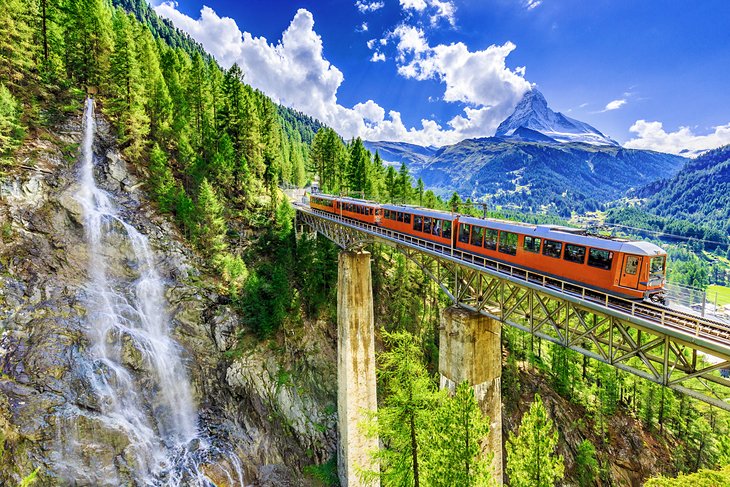
The best time to travel to Switzerland may somewhat depend on your objectives. Winter is unquestionably the greatest season to travel if you plan to go skiing. Summer is the ideal time to go hiking in the mountains because it’s warm even at the tops of the mountains, and there won’t be much rain to spoil your outdoor activities.
The best time to visit Switzerland is between April and June if your trip will involve a bit of everything. If you arrive during this time period early, there will still be some snow, and if you arrive later, there will be warm days.
There will be some rain and temperatures that range from 15 to 22 degrees Celsius, but there will also be several lengthy days with lots of sunshine that are ideal for sightseeing and trekking. The weather in May is the most erratic; you could have rain and chilly evenings or sunshine with lows in the 20s.
You’ll have more quiet and have the opportunity to find better airfare and lodging prices because the summer hordes won’t start to arrive until July and the winter throngs have already left.
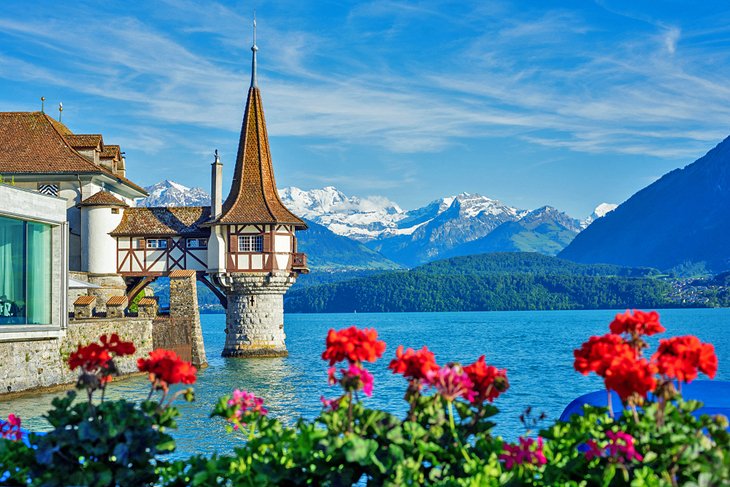
You will encounter very cold, snowy winters and bright, sunny summers in Switzerland, with a variety of temperatures and weather conditions in between, depending on the month.
A Swiss meadow covered in wildflowers is one of the most beautiful things you can view, and spring is the best season to see it in Switzerland. With temperatures reaching up to 11 degrees Celsius and plenty of sunshine, March is a perfect month to hit the slopes in the Alps where you can still find plenty of snow at higher elevation destinations.
March is the ideal time to experience the best of both worlds because it is less crowded, prices are starting to decline, and there are more than 11 hours of daylight each day.
March sees temperatures in the mid-teens and plenty of precipitation. Skiers are starting to give way to hikers, but if you plan to walk over the mountains in April, pack plenty of layers and waterproof clothes because the weather can change quickly and get chilly at night. May is a fairly rainy month, with precipitation occurring on up to 17–18 days.
Summer: To coincide with the beginning of the hiking season in June, mountain cable cars open. Since most hikers arrive in July and August, June is the best month to visit if you intend to trek. This allows you to explore without having to share the trails with a large number of other visitors.
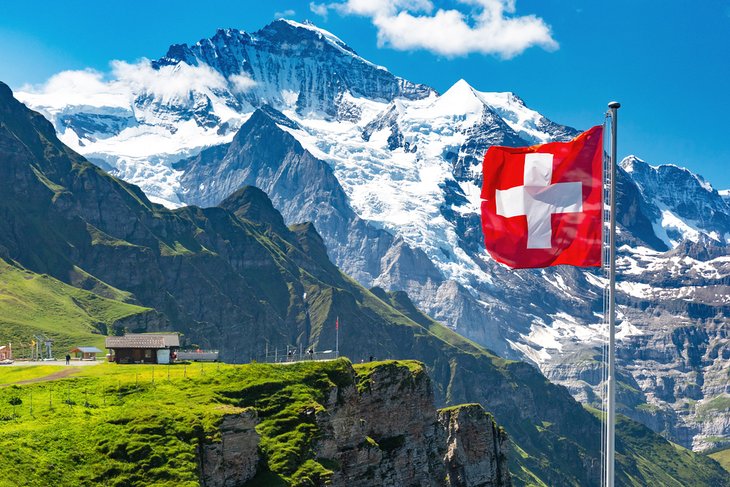
Due to the crowds in July and August, travel and lodging costs considerably increase. In addition to open-air events like the Lake Thun Music Fest and the Paleo Rock Festival in Nyon, Switzerland’s largest outdoor concert, August is the ideal month for lake bathing and high-altitude climbing.
Autumn: Switzerland has a special type of charm in September and October. This is the ideal time of year for mountain hiking because there is barely any rain, the trees are changing colors, and the air is crisp. Fog is also starting to set in.
If you’re planning on doing some mountain walking, keep in mind that trees at high altitudes begin to turn reddish and yellow in the early fall and that funiculars stop operating before the end of October.
By November, daytime highs are in the single digits and nighttime lows are just over freezing. Although November doesn’t see much rain, you should bring waterproof boots and a heavier jacket in case it starts to snow.
Winter: During the winter, visitors to the nation swarm there to enjoy the snow. Although ski resorts typically begin in November and stay open until April, the greatest and busiest months for snow activities are December through February.
Expect lodging costs to soar near the mountains; in most cities, rates rise in December as tourists flock there to shop at Christmas markets and celebrate the season amidst snow-capped mountains. Don’t let the chilly weather deter you from visiting Switzerland in the winter if you’re not a skier; enjoyable options include taking hot baths and spending the night in an igloo.
With temperatures hovering slightly above or below zero degrees Celsius in December and January, the winter climate can be unpredictable. Up to 16 days in December are typically covered with precipitation (rain, snow, or sleet), and all of the country will have at least a trace of snow in January.
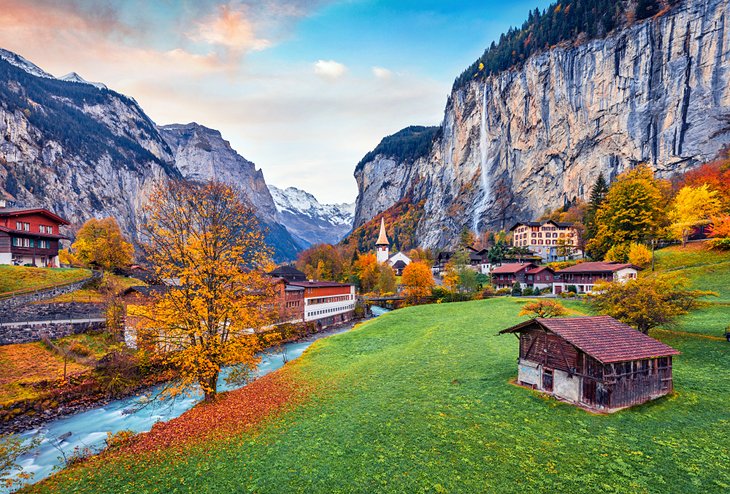
Nothing beats a trip to Switzerland in the winter if you’re an avid skier or snow-sports enthusiast, especially during the months of January and February, which are regarded winter peak season and ideal for skiing as well as a decent chance of receiving soft, fluffy snow in towns and valleys.
Winter also brings about a number of restrictions, such as the closure of most hiking paths, the arrival of rain and darkness, and the shortened hours or closure of many tourist attractions.
The best months to visit are September and October if you want to engage in non-snow outdoor activities. Valleys and lower-altitude slopes are fantastic in September and October when you get a chance, though mountain tracks can already see snow by late October.
The month of October sees average highs in the low teens, with overnight lows as low as seven degrees Celsius (layers are your friend).
While the second half of October is classified as low season, the first half is still regarded as shoulder season. If you’re coming this way, now is the perfect time to find inexpensive flights and lodging, as well as deals on vacation packages and tours.
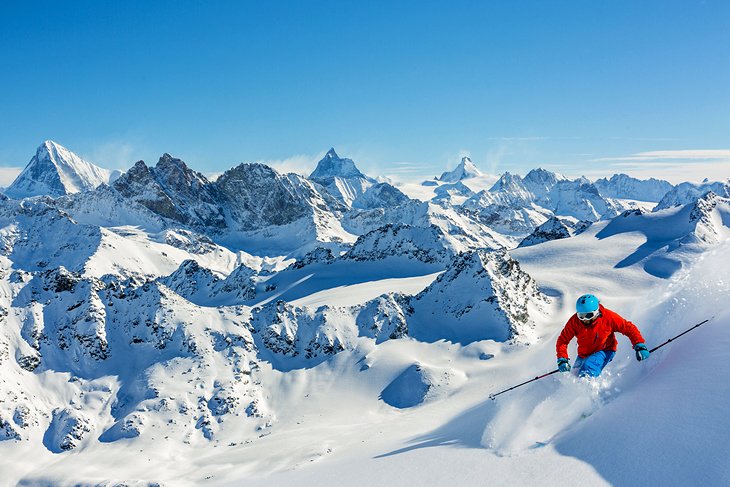
The ski season in Switzerland begins in November and lasts for over six months, but January and February are the ideal months to go skiing. These are also the busiest times to go skiing because as soon as the holidays are over, people head to the mountains, and then again in February when European schoolchildren have their summer vacations. Many resorts need a stay of at least seven days during these two popular times.
Along with crowds, these months also include some of the coldest weather, the most expensive travel, and the most expensive hotel rates. If you want to stay close to the slopes, you will still need to make bookings months in advance, even if money is not an issue.
If the turmoil of winter is too much for you, skiing is available all year long in Zermatt and on the 12,000-foot slopes of the Theodul glacier. Sports fans can board the Klein Matterhorn cable car in the summer to access the high-speed runs of the challenging slopes. Beginners can remain below, where a ski school is located.
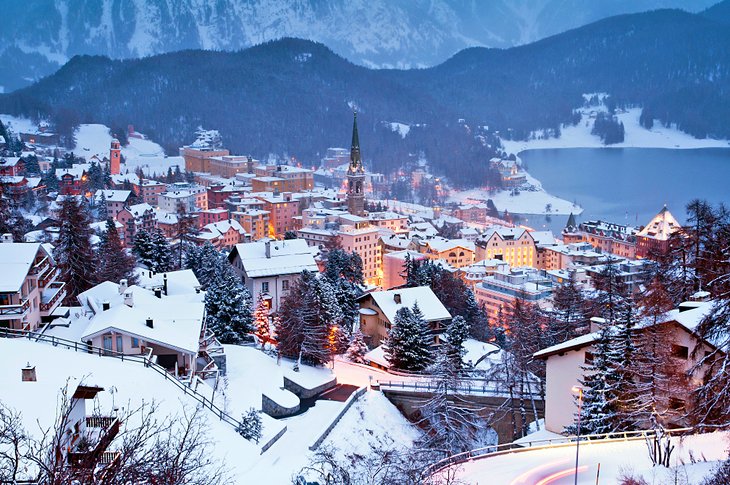
St. Moritz, Switzerland’s top mountain resort in the winter, is a sight to behold for everybody, skier or not. This small ski resort town also has many groomed routes for snowshoe trekking and mineral hot springs rich in iron in addition to world-class skiing. Wintertime lake freezing in St. Moritz serves as the playing field for ice hockey, cricket matches, and ice skating.
One of Europe’s highest-altitude rail routes, the Bernina Express departs from St. Moritz and goes through Alpine valleys, towering glaciers, and the Brusio Spiral Viaduct. It is regarded as one of the world’s most picturesque train journeys.
Depending on your plans, you can take a short or lengthy trip; it only takes four hours to get to the final stop in the Italian town of Tirano. The vistas are especially beautiful in the winter.
Even if the slopes are crowded in the winter, Switzerland’s beautiful cities make a wonderful winter getaway. Zurich, Basel, Bern, and Zermatt are delightful cities to wander through on foot after the Christmas markets have closed and the larger people have dispersed.
In January and February, places like Lake Lucerne, a popular and pricey summer vacation, change into a tranquil winter wonderland. Another fantastic winter location in Switzerland is St. Gallen, which has car-free streets and the health resort Davos (the highest town in the Alps).
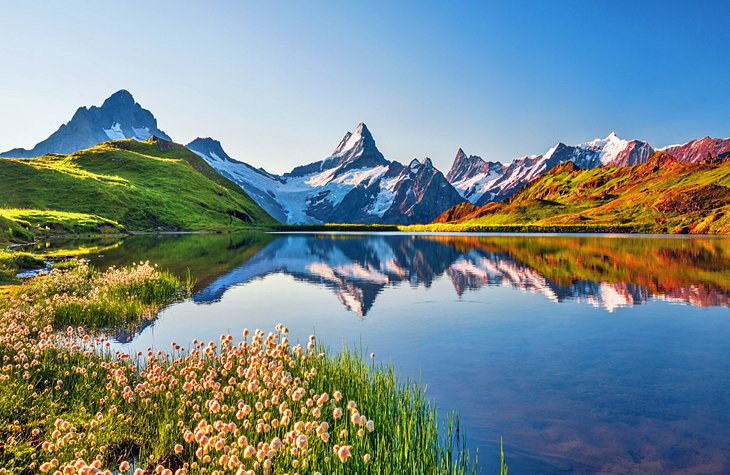
Switzerland’s most famous mountain, the Matterhorn, as well as the Great Aletsch Glacier, genuine Swiss communities like Grindelwald, and an endless array of valleys and rolling hills covered in wildflowers may all be found in the Swiss Alps.
Although you might see snow-capped mountains in your mind’s eye when you think of the Swiss Alps, the ideal season to come is actually from June to October, when the temperature is pleasant, it doesn’t rain often, and nature is in full bloom everywhere you look. Except for July and August, this is the best time to go hiking and mountain biking because there aren’t as many people on the slopes.
All of the cable cars, which are frequently required to access the highest trails, are accessible between July and September. Check in advance if they are operating if you plan to come before or after specified times; as this typically depends on snow accumulation, it may vary from year to year.
The only thing that is certain is that the weather is difficult to anticipate, with temperatures in these times ranging from the upper 20s to the teens, and even lower at night. Layer your clothing, especially in the evenings, and bring a jacket. Once the sun has set, the temperature drops (quickly) the higher you are.
The Swiss Alps give lots of options for snow treks, cross-country skiing, and sledding if you have your heart set on seeing winter scenery. Remember that lower-elevation summits might not receive as much snow, even while mountains like the Jungfraujoch and Mittelallalin will have plenty of it. For instance, the mountains near Lake Lucerne don’t typically receive much snow during warm winters.